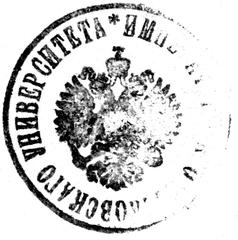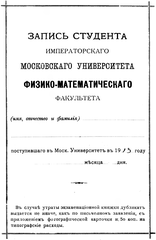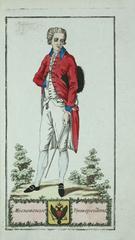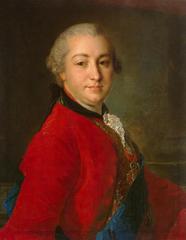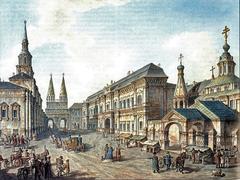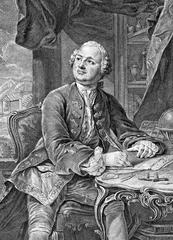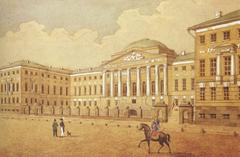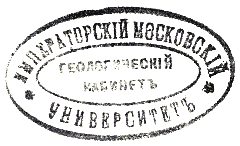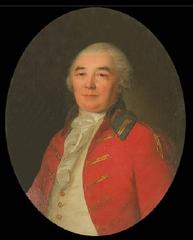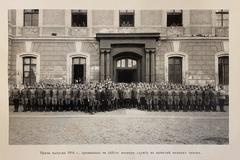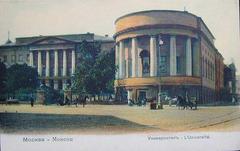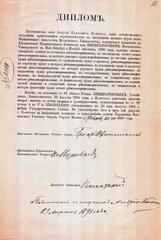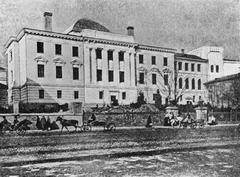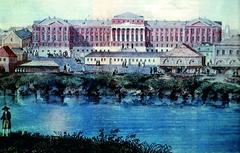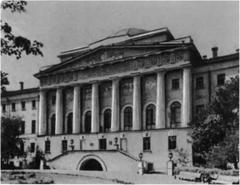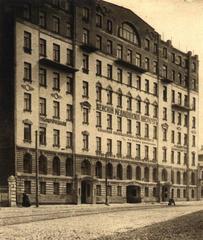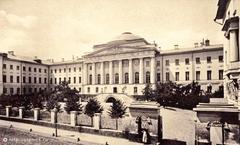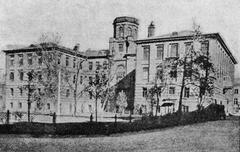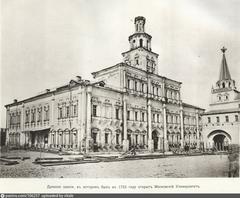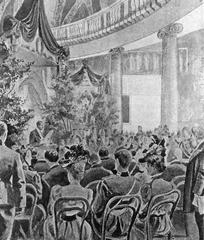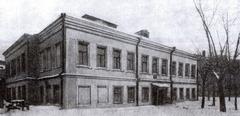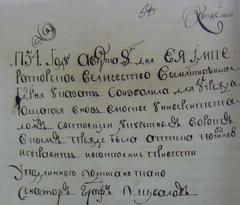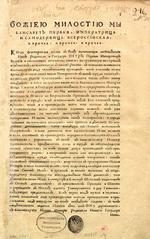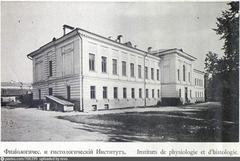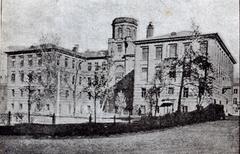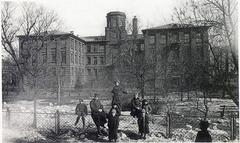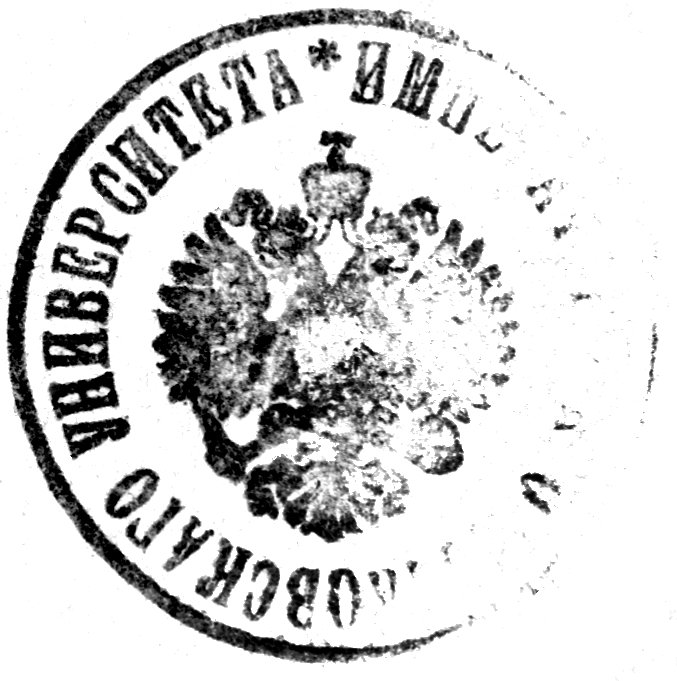
Imperial Moscow University Visiting Hours, Tickets, and Guide to Moscow Historical Sites
Date: 14/06/2025
Introduction to Imperial Moscow University and Its Historical Significance
Imperial Moscow University, known today as Lomonosov Moscow State University (MSU), stands as a testament to Russia’s enduring academic tradition and architectural splendor. Founded in 1755 by Empress Elizabeth at the urging of Mikhail Lomonosov and Ivan Shuvalov, the university was envisioned as a modern institution that would rival its Western European counterparts, integrating classical education models with Russian intellectual traditions (howtorussia.com; hist.msu.ru). Throughout its storied history, MSU has weathered national crises, periods of reform, and significant architectural transformations, all while cementing its role as a central hub for Russian education, culture, and scientific advancement (Wikipedia; sechenov.ru).
MSU’s campuses, from their neoclassical beginnings near Red Square to the monumental Stalinist skyscraper on Sparrow Hills, embody a unique blend of Enlightenment ideals, Russian Revivalism, and Soviet grandeur (Harvard Omeka; Mappr). This guide offers an in-depth look at the university’s historical significance, architectural highlights, and practical visitor information, including visiting hours, tickets, accessibility, guided tours, and nearby attractions.
Whether you’re passionate about history, architecture, or Russian culture, a visit to Imperial Moscow University provides a fascinating journey through the intellectual and urban evolution of Moscow (Express to Russia; CNN Travel).
Table of Contents
- Introduction
- Historical Overview
- Architectural Evolution and Styles
- Symbolism and National Identity
- Academic and Cultural Legacy
- Notable Architectural Features
- Visiting Imperial Moscow University
- Visiting Lomonosov Moscow State University
- FAQ
- Practical Visitor Tips
- Special Events and Academic Calendar
- Conclusion
- References and Further Reading
Visiting Imperial Moscow University: Moscow’s Academic and Cultural Jewel
Historical Overview
Founding and Early Development (1755–1804)
Imperial Moscow University was established by decree of Empress Elizabeth on January 25, 1755, inspired by the vision of Mikhail Lomonosov and Ivan Shuvalov (howtorussia.com; hist.msu.ru). Its curriculum merged classical European educational models with Russian culture, focusing on philosophy, medicine, and law. The university’s original home near Red Square marked it as a central institution in Russian society, quickly becoming a nucleus for intellectual life and publishing (oslo2000.uio.no).
Academic Expansion and Reforms (1804–1917)
With the 1804 University Charter, MSU gained greater autonomy, allowing self-governance and the establishment of four faculties: moral and political sciences, physical and mathematical sciences, medical sciences, and law (hist.msu.ru). The medical faculty, founded in 1758, became the foundation for the I.M. Sechenov First Moscow State Medical University (sechenov.ru; studyabroadaide.com). Through the 19th century, the university was a center for scientific progress and a cradle for independent thought and dissent (oslo2000.uio.no).
Societal and Cultural Impact
MSU played a critical role in social transformation, promoting access to education and the idea of knowledge as a noble pursuit (oslo2000.uio.no). Its publishing activities and periodicals disseminated Enlightenment ideas and nurtured intellectual movements, including the rise of freemasonry and public debate.
Architectural Evolution and Campus Development
From its neoclassical origins, the university’s campus expanded in the late 19th century with the addition of the Devichye Pole complex, which included teaching hospitals and research institutes (howtorussia.com; sechenov.ru). These developments reflected MSU’s commitment to integrating scientific research and practical training.
University’s Role in National Crises and Reforms
During the 1812 Patriotic War, university members participated in Moscow’s defense, and the campus was damaged by fire (sechenov.ru). The 1804 reforms under Alexander I increased university autonomy and inspired the creation of other Russian universities (oslo2000.uio.no). Distinguished alumni include Ivan Sechenov, Nikolay Pirogov, and Anton Chekhov (fmsmu.com).
Legacy and Modern Significance
By the 20th century, MSU was recognized as the heart of Russian education, with a profound influence on national culture and science (hist.msu.ru). Today, visitors can explore its historic buildings and museums, which continue to showcase its academic and cultural achievements (studyabroadaide.com).
Architectural Evolution and Styles
Imperial Moscow University’s architectural journey mirrors Russia’s evolving identity. The original neoclassical buildings reflected Enlightenment values and rational design (Harvard Omeka). The devastation of the 1812 fire led to a wave of reconstruction, including more decorative interiors and intimate scales.
By the late 19th century, Russian Revival and Gothic Revival styles infused the campus with indigenous and medieval motifs. The university’s most iconic feature, the Stalinist Main Building completed in 1953, exemplifies Soviet monumentalism and is one of Moscow’s “Seven Sisters” skyscrapers (Mappr). This structure, designed by Lev Rudnev, remains one of the world’s tallest educational buildings and is adorned with Soviet emblems and statues.
Symbolism and National Identity
MSU’s architecture reflects shifts in Russian national identity. The neoclassical style aligned with European Enlightenment, while Russian Revival and Stalinist styles embodied growing nationalism and Soviet power (Harvard Omeka; Mappr). Statues of scientists and workers on the Main Building celebrate education and socialist achievement.
Academic and Cultural Legacy
The university has fostered generations of leading scientists, writers, and statesmen. Its libraries and museums house invaluable collections, from rare manuscripts to scientific instruments (TravelSetu). The campus remains a vibrant cultural hub, featuring theaters, concert halls, and one of Russia’s oldest botanical gardens.
Notable Architectural Features
- Main Building: Stalinist skyscraper with 36 stories, Soviet symbols, and a five-pointed star (Mappr).
- Historic Neo-classical Buildings: The original Mokhovaya Street buildings with columned porticos (Harvard Omeka).
- Botanical Garden: Established in 1706, featuring rare plants and greenhouses.
- Museums and Libraries: Collections in zoology, geology, anthropology, and a vast scientific library (TravelSetu).
Visiting Imperial Moscow University
Visiting Hours
- Historic Buildings & Museums: Open Tuesday–Sunday, 10:00 AM–6:00 PM; closed Mondays and national holidays.
- Observation Deck (Sparrow Hills): Open daily 10:00 AM–8:00 PM. Advance booking recommended.
Tickets and Admission
- Museums: 300–500 RUB, with discounts for students.
- Observation Deck & Guided Tours: Prices vary; book via the official MSU website or authorized operators.
- Many campus areas are free to access; some require tickets (Express to Russia).
Accessibility
- Wheelchair access at main entrances and select exhibitions.
- Modern campus buildings offer ramps and elevators; historic buildings may be less accessible. Contact visitor services in advance if needed.
Guided Tours and Events
- Official tours (English and other languages) cover university history, architecture, and notable alumni.
- Special events include lectures, exhibitions, and cultural programs. Book in advance, especially for groups.
Nearby Attractions and Travel Tips
- Public Transport: Universitet metro station (Line 1) connects directly to the campus.
- Nearby Sights: Gorky Park, Moscow River embankment, Red Square, Kremlin, and Bolshoi Theatre (The Broke Backpacker; EDUCBA).
- Tips: Wear comfortable shoes; carry an umbrella in spring/summer; use a Troika card for public transport (Roads & Kingdoms).
Photographic Opportunities
- Neoclassical façades, Stalinist Main Building, panoramic city views from the observation deck.
- Early mornings and sunsets offer ideal lighting.
Visiting Lomonosov Moscow State University: Practical Guide
Getting There and Orientation
- Main Campus Address: Ulitsa Leninskiye Gory, 1, Moscow, Russia, 119991 (Express to Russia).
- Nearest Metro Stations: Universitet, Lomonosovskiy Prospekt, Vorobyovy Gory.
- Campus: Over 1,000 buildings spanning 1.6 square kilometers (Wikipedia).
Visiting Hours and Tickets
- Campus Grounds: Open daily from dawn to dusk, free entry.
- Main Building & Viewing Platforms: 32nd-floor platform accessible only by guided tour (advance booking, ID required).
- Museums: 10:00 AM–6:00 PM, closed Mondays. Tickets 100–300 RUB; check museum websites for updates.
Guided Tours and Special Events
- Private and group tours available in multiple languages (advance booking recommended).
- Occasional public events—check MSU’s official channels for schedules.
Photography and Visitor Etiquette
- Photography permitted outdoors; interior photography requires permission.
- Please respect academic activities and observe posted etiquette.
Campus Facilities and Amenities
- Cafeterias, coffee shops, and bookstores on campus.
- Restrooms and limited accessibility for visitors with mobility needs.
Best Times to Visit
- Spring/Summer: May–September, pleasant weather and gardens in bloom.
- Autumn: September–October, for fall colors.
- Winter: November–March, snow adds a unique charm.
Frequently Asked Questions (FAQ)
Q: Can I visit the university campus freely?
A: Public areas, gardens, and exteriors are generally open to visitors. Access to academic buildings and the Main Building’s upper floors is restricted and requires a guided tour.
Q: Do I need tickets for museums or the observation deck?
A: Yes, tickets are required for most museums and the observation deck. Many outdoor areas are free.
Q: Are guided tours available in English?
A: Yes, but advance booking is essential.
Q: Is the campus accessible for visitors with disabilities?
A: Modern areas are accessible; historic buildings may be limited. Contact visitor services in advance.
Q: How do I get there by public transport?
A: Use the Moscow Metro (Universitet station) or buses/taxis. The Troika card is recommended for transit.
Practical Visitor Tips
- Plan Ahead: Consult official websites for hours, ticketing, and tour availability.
- Combine Visits: Pair your tour with nearby sites like Red Square and the Kremlin for a full cultural experience.
- Dress Comfortably: Moscow weather can change quickly; dress in layers, bring an umbrella.
- Safety: Central Moscow is safe, but keep standard precautions in crowded areas (Reddit).
Special Events and Academic Calendar
- Students’ Day (Tatiana Day): Celebrated on January 25 with campus events and festivities (en.wikipedia).
- Anniversaries: Marked by academic conferences and public lectures (ru.wikipedia).
Conclusion
Visiting Imperial Moscow University allows you to experience the heart of Russian academia and cultural heritage. With its blend of neoclassical, revivalist, and Stalinist architecture, MSU is a living chronicle of Moscow’s educational and architectural evolution. Take advantage of guided tours, explore the university’s museums, and enjoy panoramic views of Moscow. Whether you’re a scholar, traveler, or enthusiast, MSU’s legacy and grandeur make it a must-see destination among Moscow historical sites. For updated information, visit the official MSU website and reliable travel resources (Express to Russia).
Suggested Visuals:
- Photos of the Main Building with alt text “Lomonosov Moscow State University Main Building skyline view”
- Images of the neoclassical university buildings and interior halls
- Map with campus location and metro stations
- Panoramic images from the 32nd-floor viewing platform
Interactive Media:
- Embed a campus map and nearby attractions
- Provide links to virtual tours if available
References and Further Reading
- HowToRussia: History of Russia’s Moscow State University
- hist.msu.ru: Founding of Imperial Moscow University
- Oslo2000: University Reform and Development
- Sechenov.ru: History of Moscow State Medical University
- StudyAbroadAide: List of Best Universities in Russia
- Harvard Omeka: Revival Style Architecture in Moscow
- CNN Travel: Moscow Attractions
- Wikipedia: Main Building of Moscow State University
- Express to Russia: Moscow State University Guide
- TravelSetu: Moscow Tourism Guide
- The Broke Backpacker: Moscow Itinerary
- TripSavvy: Moscow June Weather Guide
- Wikipedia: Imperial Moscow University
- Google Arts & Culture: Moscow Imperial University
- CollegeDunias: First Moscow State Medical University
- Roads & Kingdoms: Know Before You Go to Moscow
- Mappr: Russia Capital Cities
